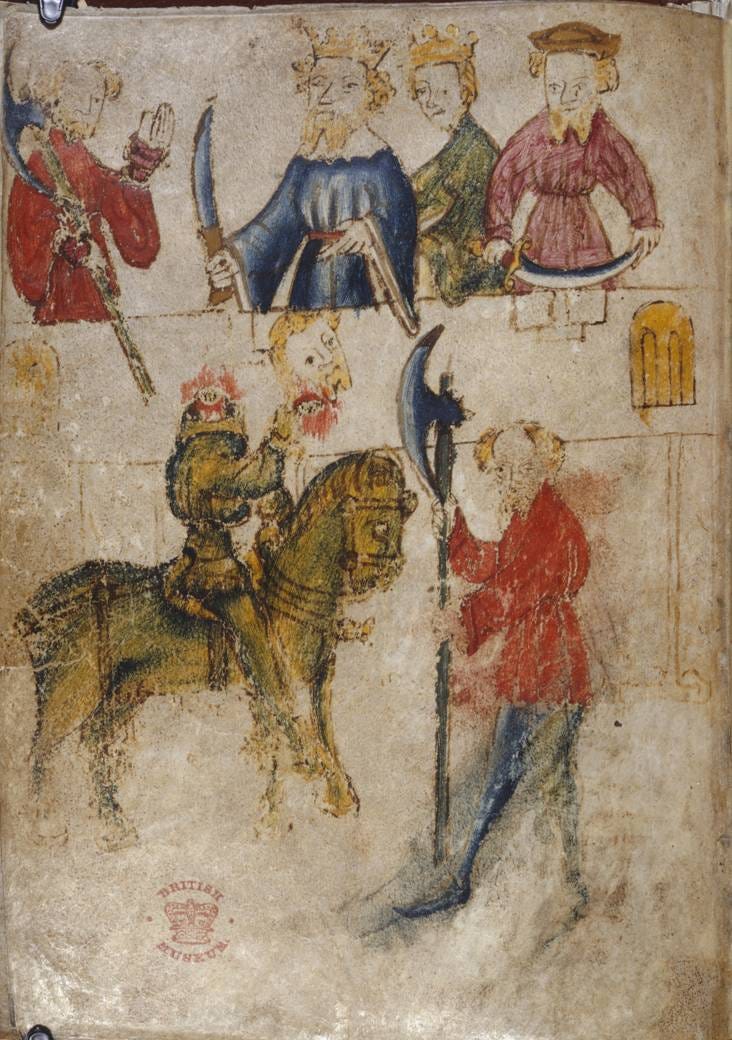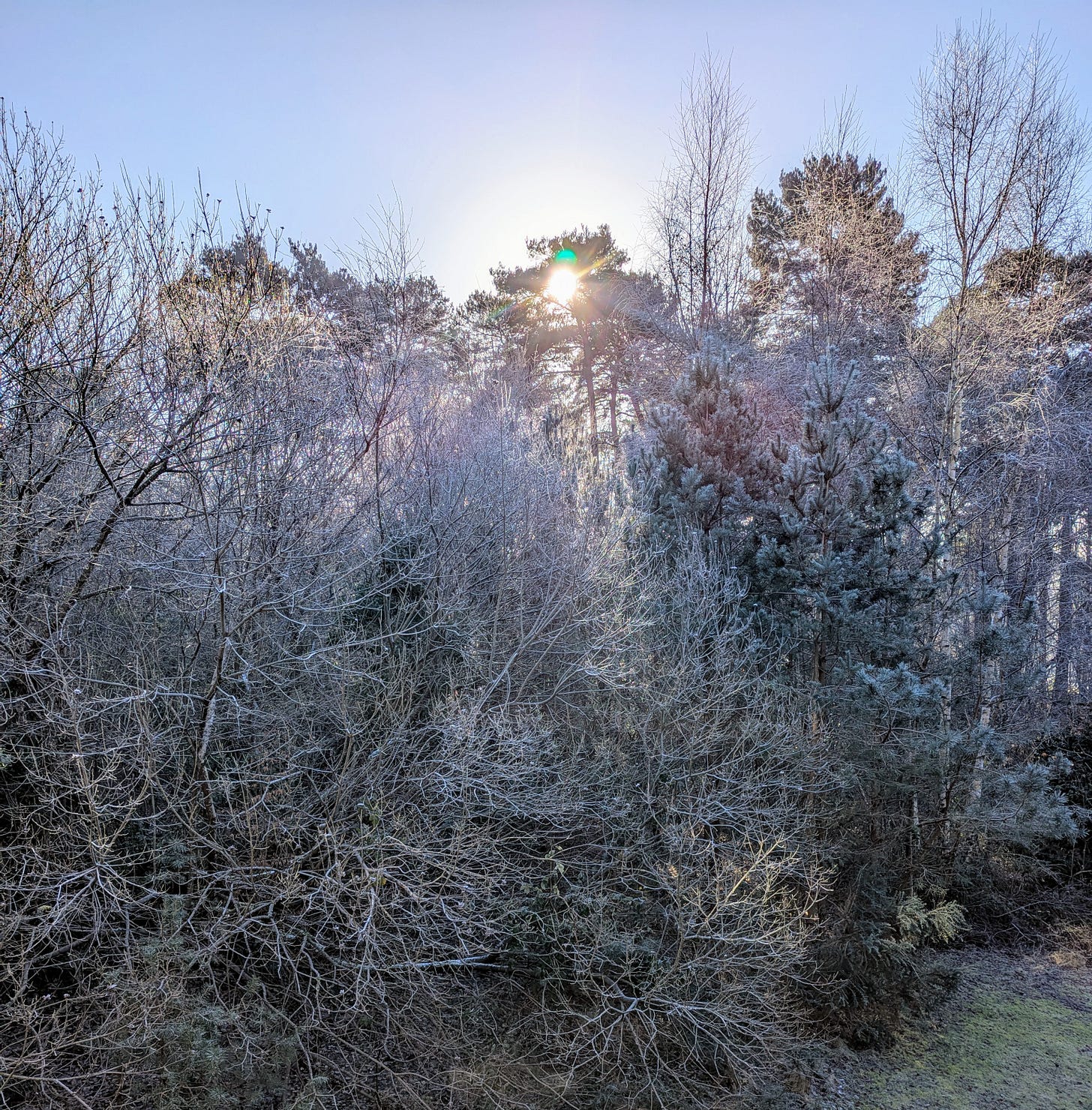Happy New Year and a warm welcome to my new subscribers. Thank you for reading.
My last post was about endings but the arbitrary line that is 1st January brings inevitably with it thoughts about beginnings. We expect the new year to be different, somehow, from the old. But what is ever really new? Certainly not the year, which is just one of many markers of another cycle. For me, the year really starts in September with the beginning of a new school year. January feels like a return rather than a reinvention. And it’s hard return with the bitter cold and dark mornings.
When I am writing a poem, I don’t start with a blank slate, I look at other texts for inspiration and ideas. I’m a magpie writer, stealing shiny bits and pieces to make my own nest, attracted to a word, an image, combining elements of form I’ve seen elsewhere. I don’t apologise for this. As I did with my poem The Lament of Curley’s Wife where I started with lines that were pure Steinbeck, I’m often playing around with and influenced by the literature that I encounter every day or have spent years thinking about and teaching.
Our culture tends to put a premium on originality and value the ‘new’ but almost all our new things are really old things dusted off and repainted. Even “make it new”, Ezra Pound’s infamous rallying cry for Modernism is “in fact a dense palimpsest of historical ideas about the new.” (Michael North). T. S. Eliot’s ground breaking The Wasteland is, of course, “fragments/ I have shored against my ruins” a web of allusions and repurposing of cultural artefacts. Out of the old, comes the new.
A new-old text that often comes to mind for me at this time of year is the fourteenth century alliterative poem, Sir Gawain and the Green Knight which I first encountered in Tolkien and Gordon’s edition when studying medieval literature for my MPhil. The poem opens with a New Year’s feast at Arthur’s court where the Green Knight rides in with an enormous axe in one hand and a branch of evergreen holly in the other. The Green Knight may look like an unexpected and outlandish interruption to the celebrations, but his arrival is in keeping with Arthurian tradition — the king will not eat until he has heard or seen something new and strange. So the arrival of the Green Knight with his challenge is simultaneously a novelty and a tradition, amazing and expected:
For wonder of his hwe men hade,
Set in his semblaunt sene;
He ferde as freke were fade,
And overal enker grene. (146-50)1
(“For wonder of his hue men had/ set clearly in his appearance/ He was to be feared as a bold knight/ And overall clothed in green.”)

The Green Knight’s challenge is for someone to strike him on his bare neck with the huge axe and in one year’s time, he will do the same to the challenger. The young and untried Gawain duly strikes the Green Knight’s head from his shoulders. To the horror and amazement of the watching court, the Green Knight picks up his own head and promises “such a dunt as thou has dalt — disserved thou habbes — / To be yelderly yolden on Nw Yeres morn” (“you’ll have such a blow in return as you deserve/ to be due to you on New Year’s morning” 452-3). With this, the Green Knight exits, leaving Arthur and his court to the feast.
The poet then passes in two stanzas over the whole year “uche sesoun serlepes sued after other” (501) that Gawain has to wait before setting off to find the Green Knight and fulfil the challenge. Gawain actually puts off leaving until All Saints Day (1st November), leaving himself only two months to find the Green Chapel. The real adventure all happens in the last few days of the year. So Gawain has almost a whole year marking time with that challenge looming over him. Even when Gawain arrives at Bertilak’s castle with the Green Chapel close by, he procrastinates, spending his days with the lady of the house while Bertilak goes hunting. The promise of the New Year rapidly dissipates into a waiting game, what is new and strange becomes old and filled with dread.
It is only when Gawain faces the Green Knight and finds the challenge is not quite what he expected that he really learns something new. The story ends with his return to Arthur’s court, if not triumphant, then certainly wiser and with hope for the future renewed after his year of uncertainty and hesitation. The new is always there waiting for us in the old. If it isn’t new, then make it new — allow the old to infuse the new and love it all over again.
Some new(ish) things I’ve been reading:
Katherine May’s comment “January is a convalescent month” has stuck in my mind. I read her Wintering a few years ago — a lovely exploration of the pleasures of the cold season.
Kelsey Ervick has a great post on New Year’s imperatives.
Joey Connolly’s short essay “Notes on ‘COMP’” in the latest Poetry Review has some bittersweet and apposite observations on the tensions and confluences between poetry and AI.
For the medievalists and the etymologically inclined, Ross G. Arthur’s unpacking of the meaning of “enker” in Sir Gawain and the Green Knight in Notes and Queries (June 2024). Spoiler: the Green Knight might not be green!
Images of the manuscript of Sir Gawain and the Green Knight are available in the University of Calgary digital collection.
Simon Armitage’s translation is “Amazement seized their minds,/ no soul had ever seen/ a knight of such a kind-- /entirely emerald green.” In Sir Gawain and the Green Knight: A New Verse Translation by Simon Armitage (2007). For the interpretation of “enker” see Ross G. Arthur’s essay.




